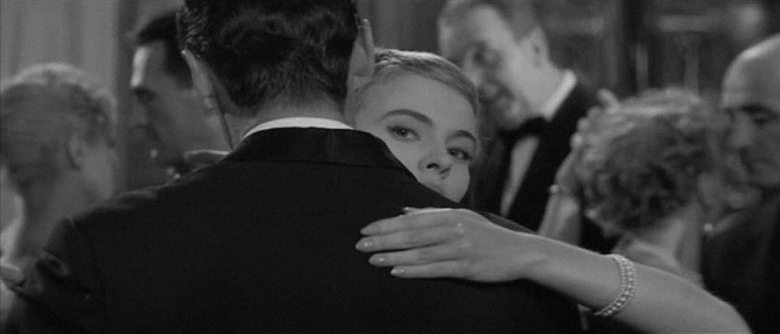One of the
few attractions of Bonjour Tristesse
(1958), a half-baked domestic parable by Otto Preminger, is Jean Seberg, then
still on the cusp of young adulthood, whose performance in the film had made
such an abiding impression on Jean-Luc Godard that he intended her for the
seminal À bout de souffle (1960). Seberg was gifted with the kind
of face that made her easily adaptable to a wide range of characters of varying
natures. There was, however, one type of role that she could never attempt with
convincing effect- a guileless maiden. No, her beauty was never wide-eyed. In
Bonjour Tristesse especially her
contrived precocity takes the hue of slyness, which is often symptomatic of one’s
barely contained rebellious streak.
A
rebellious youth though she is, and admittedly a quite foolish one as it transpires,
there is something rather poignant about Seberg’s Cecile that moves one to hedge
one’s rash criticism. She is a miserable girl- only a few minutes into the film
and the conclusion is already surmised. The sequence with Cecile’s subtle
change of countenance when a maudlin ballad by Juliette Greco triggers a tragic
memory- her eyes stare steely and penetratingly ahead, concealing in vain a
mingled sensation of fear, forlornness and pain- has become one of the
memorable moments in cinematic history, ironically with a film that, in its
entirety, does not quite cohere with the standard and prominence of that scenic
moment.
The film
oscillates between the present and the past. Those scenes of Cecile’s
remembrance - that summer when she and her father were holidaying in French
Riviera- are imbued with garish, pyrotechnic colours, as opposed to the
black-and-white of those in the present. Preminger’s adaptation of Françoise Sagan’s
juvenilia betrays some
glaring plot holes that are however not so noticeable in the novella. For
instance, one can never understand the appeal of Raymond, Cecile’s father,
played by David Niven, who is generally bored, stolid, indolent, far removed
from the seductive, amoral libertine he was written to be.
Another inexplicable
twist sees Anne Larson, played by Deborah Kerr, set to worming herself into the
lives of Cecile and Raymond, whilst only minutes ago she huffily voiced her
disapprobation of their dissipated lifestyle. These and other of such
inconsistencies- due largely to the director’s willful reduction of Cecile’s
internal monologues, which, in the book, sufficiently account for her
incendiary relationship with Anne- inevitably reveal the film to be yet another
botched effort from Preminger, after his much-slated Saint Joan (1957).
Despite several imperfections in Bonjour Tristesse,
Seberg’s hauntingly deft performance is still worthy of note. Her presence in
the film is so dazzlingly formidable that the other characters are almost fifth
wheels in comparison. Save Elsa, whose flightiness and high-pitched squeakiness
I personally found to be so much more interesting than the dull, pedantic Anne.
After the
demise of Anne, which Cecile tried unsuccessfully to forestall, the father and
daughter return to their decadent way of life. But nothing is the same as before. The
hitherto intimate bond between them is irrevocably severed. Raymond seems now an
empty shell of a man. Cecile feels constantly surrounded by “a wall of memory,”
but little does she know that it is her ultimate awakening of a long dormant conscience that contributes to such
inconsolable sadness and compunctions.
All the
pent-up emotions lead to a climatic ending of the film, with Cecile tearing up
before the looking glass. As the title intimates, “Hello, Sadness,”
one feels Cecile’s tear is not going to stop anytime soon.

Comments
Post a Comment